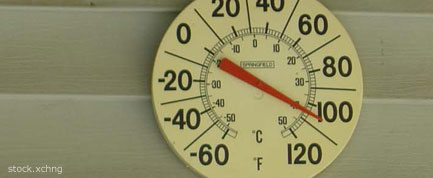Extreme Summer Forecast: 10 Degrees Hotter by 2080

Global warming could turn the heat way up during the summer in the eastern United States, raising the average by nearly 10 degrees Fahrenheit by the 2080s, a new NASA study finds.
“There is the potential for extremely hot summertime temperatures in the future, especially during summers with less-than-average frequent rainfall,” said lead author Barry Lynn of NASA’s Goddard Institute for Space Studies in New York City.
Summer’s daily high temperatures currently average in the low-to-mid 80s in the East, but global warming could cause those temperatures to soar into the low-to-mid 90s in the next 70 years.
During extreme summers, if less rain falls to cool the Earth, July and August highs could average between 100 and 110 degrees Fahrenheit in cities such as Chicago, Washington, D.C. and Atlanta.
Researchers analyzed nearly 30 years of observational temperature and precipitation data and used computer models to simulate changes in atmospheric circulation that could be used to predict variations in summer-to-summer temperatures.
The predictions were made assuming that carbon dioxide emissions continued to increase about 2 percent a year, known as the “business as usual” model. The findings, detailed in the April 2007 issue of the American Meteorological Society’s Journal of Climate, were too recent to be factored into the latest Intergovernmental Panel on Climate Change report.
- Quiz: What's Your Environmental Footprint?
- Top 10 Surprising Results of Global Warming
- Video: Goldilocks and the Greenhouse
Get the world’s most fascinating discoveries delivered straight to your inbox.

